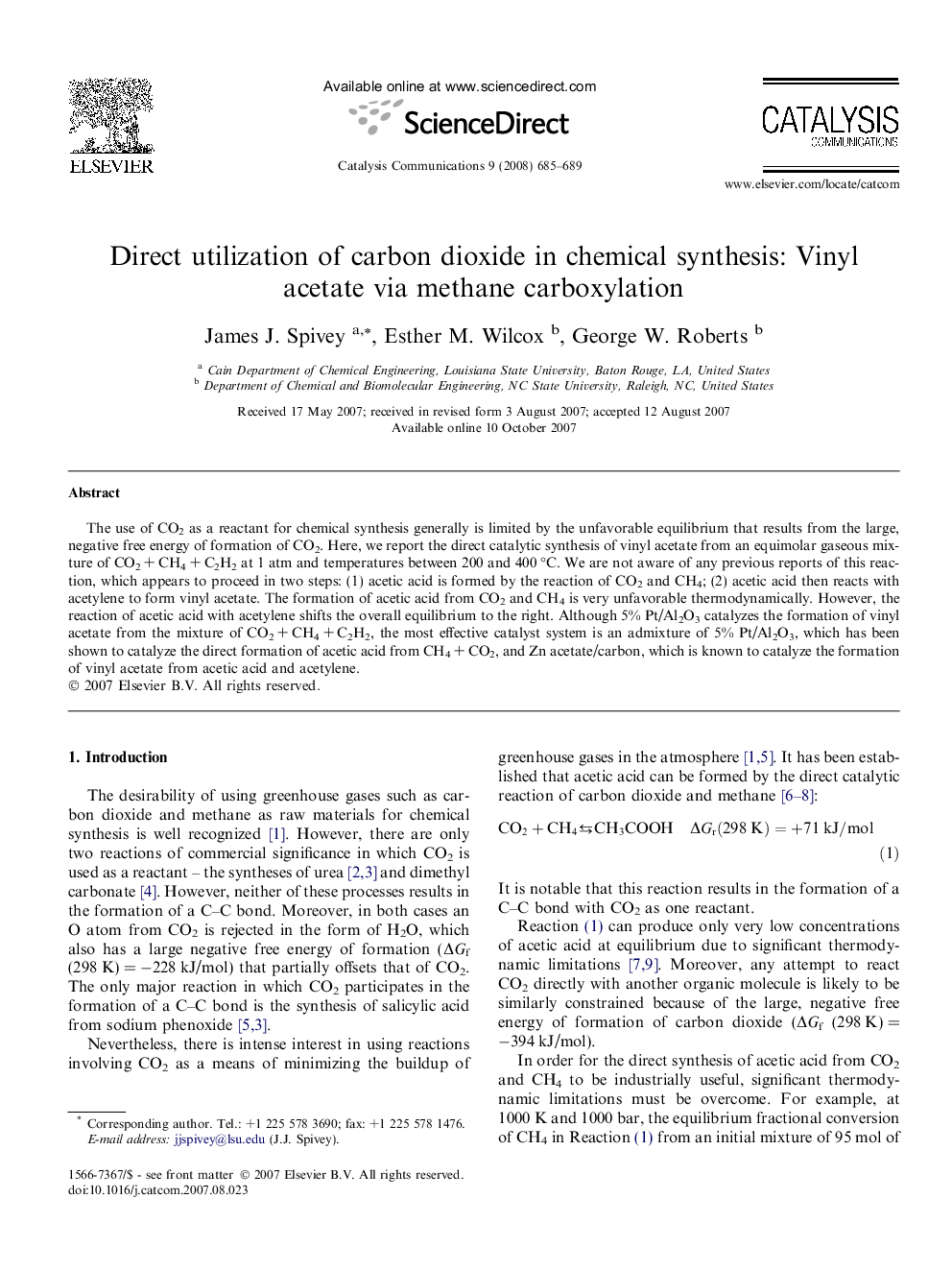| کد مقاله | کد نشریه | سال انتشار | مقاله انگلیسی | نسخه تمام متن |
|---|---|---|---|---|
| 52237 | 46867 | 2008 | 5 صفحه PDF | دانلود رایگان |

The use of CO2 as a reactant for chemical synthesis generally is limited by the unfavorable equilibrium that results from the large, negative free energy of formation of CO2. Here, we report the direct catalytic synthesis of vinyl acetate from an equimolar gaseous mixture of CO2 + CH4 + C2H2 at 1 atm and temperatures between 200 and 400 °C. We are not aware of any previous reports of this reaction, which appears to proceed in two steps: (1) acetic acid is formed by the reaction of CO2 and CH4; (2) acetic acid then reacts with acetylene to form vinyl acetate. The formation of acetic acid from CO2 and CH4 is very unfavorable thermodynamically. However, the reaction of acetic acid with acetylene shifts the overall equilibrium to the right. Although 5% Pt/Al2O3 catalyzes the formation of vinyl acetate from the mixture of CO2 + CH4 + C2H2, the most effective catalyst system is an admixture of 5% Pt/Al2O3, which has been shown to catalyze the direct formation of acetic acid from CH4 + CO2, and Zn acetate/carbon, which is known to catalyze the formation of vinyl acetate from acetic acid and acetylene.
Journal: Catalysis Communications - Volume 9, Issue 5, 20 March 2008, Pages 685–689